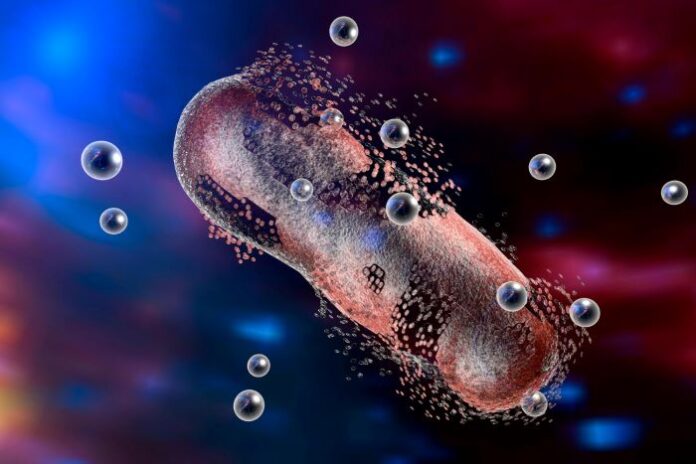Introduction: The Global Impact of Infections
Infections are a major cause of morbidity and mortality worldwide. They are caused by microorganisms, such as bacteria, viruses, fungi, and parasites. These microorganisms can enter the body through a variety of routes, including the skin, respiratory tract, digestive tract, and genitourinary tract. Once inside the body, microorganisms can multiply and cause damage to tissues. This can lead to a variety of symptoms, including fever, pain, inflammation, and organ dysfunction. In some cases, infections can be life-threatening. Here we’ll delve into the benefits of stimulated nanoparticles.
The Limitations of Traditional Antibiotics
Antibiotics are drugs that are used to treat infections. They work by killing or inhibiting the growth of microorganisms. Antibiotics have been a major breakthrough in the fight against infections. They have helped to reduce the incidence and severity of infectious diseases.
Rise of Antibiotic Resistance and Biofilm Challenges
However, antibiotics are not always effective. One of the main reasons for this is the development of antibiotic resistance. Antibiotic resistance occurs when microorganisms evolve to overcome the effects of antibiotics. Another reason for antibiotic resistance is ineffective blood supply to the infected area which can happen, for example, when an infection forms on, or within, an artificial implant. In those cases, biofilm will typically form and protect the microorganisms.
Understanding Biofilms: A Barrier to Treatment
Biofilms are one of the main aids of antibiotic resistance. Biofilms are communities of microorganisms that are embedded in a matrix of extracellular material. Biofilms are very difficult to eradicate with antibiotics because the antibiotics have difficulty reaching the microorganisms inside the biofilm.
Biofilms can form on a variety of surfaces, including medical devices, implants, and tissues. Biofilm-related infections are a major challenge in healthcare. They are estimated to cause up to 80% of all hospital infections.
Nanoparticles: A Novel Approach to Combat Biofilms
Nanoparticles are a new and promising approach to the treatment of biofilm-related infections. Nanoparticles are small particles that can be made from a variety of materials, including metals, metal oxides, and polymers. Nanoparticles have three unique properties that make them effective against biofilms.
Key Properties of Nanoparticles in Fighting Infections
- Size: One of the most important properties of nanoparticles is their small size. Nanoparticles can penetrate the biofilm matrix more easily than antibiotics. This allows the nanoparticles to reach the microorganisms inside the biofilm and kill them. The nano particles’ shape, size and mechanical properties allow for “sanding/ dismantling” of the biofilm without damaging the implant and healthy tissue.
2) Surface Area: Another important property of nanoparticles is their large surface area. This large surface area allows the nanoparticles to interact with the microorganisms inside the biofilm more effectively.
3) Delivery Properties: Nanoparticles can be used to deliver antibiotics to the microorganisms inside the biofilm. This can be done by coating the nanoparticles with antibiotics. The nanoparticles can also be used to deliver other antimicrobial agents, such as metals and metal oxide.
Innovative Strategies: Dimoveo Medical’s Nanoparticle System
Following this concept, a company was formed, Dimoveo Medical (a MEDX Xelerator portfolio company), and with it, a new system was developed to more effectively deliver antimicrobial agents. This new system combines nanoparticles with ultrasound energy to generate a cavitation effect to mechanically disrupt the biofilm. Disrupting the structure of the biofilm makes it easier for antibiotics or any other antiseptic material to reach the microorganisms inside the biofilm and kill them.
Practical Applications: TKA and PJI Treatment
Nanoparticles are still under development, but they have the potential to revolutionize the treatment of biofilm infections. Here are two examples of how nanoparticles are being developed to treat biofilm infections in a variety of medical procedures:
Total Knee Arthroplasty (TKA): TKA is a common surgical procedure to replace a damaged knee joint with an artificial joint. TKA is a very successful procedure, but there is a small risk of infection. Biofilm infections are a major challenge in TKA because they are difficult to treat with antibiotics. Nanoparticles and ultrasound technology can help mechanically clean the knee cavity from this biofilm.- Periprosthetic Joint Infection (PJI): PJI is an infection that occurs around a joint implant. PJI is a serious complication of joint replacement surgery. Nanoparticles and ultrasound technology are being developed to treat PJI by delivering antibiotics to the site of the infection and by disrupting the structure of biofilms.
Conclusion: Revolutionizing Infection Treatment with Nanoparticles
As nanotechnology continues to develop, we can expect to see even more innovative and effective ways to use nanoparticles to treat biofilm-related infections. This novel technology will reduce the need for long term antibiotic treatment and thus reduce the antibiotic resistance effects.
















